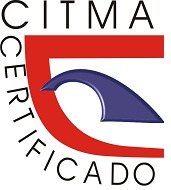Technological alternative for the integration of information: Case study of Biocubafarma projects
Keywords:
enterprise service bus, business intelligence, data integration, data virtualization, Mule ESBAbstract
Business Intelligence (BI) includes the set of processes that are performed to convert raw data into significant information to support commercial decision making. Data integration and related techniques represent the basis for creating a unified view of data from different sources. Among the techniques, data virtualization stands out, proposing Enterprise Service Bus (ESB) as one of the alternatives for its implementation. This article presents a case study in the context of three process areas of the Pharmaceutical Laboratories Enterprise AICA. The study intervenes 97 integration flows developed with ESB technology, as a technological alternative that allows creating a virtualization layer that provides access to integrated information in real time and simplifies the process of analysis and decision making at different levels. All the collected evidence allows to argue the experiences obtained from developing this type of solutions and constitute the findings of the case study.
References
Aziz, O. et al. (2020). Research Trends in Enterprise Service Bus (ESB) Applications: A Systematic Mapping Study. IEEE Access, (8): 31180-31197.
Barros Justo, J. L., F. B. V. Benitti & S. Matalonga (2019). Trends in software reuse research: A tertiary study. Computer Standards and Interfaces, 66.
Berna Martínez, J. et al. (2018). Method for the Integration of Applications based on Enterprise Service Bus Technologies.
Chen, F., L. Zhang & X. Lian (2021).A systematic gray literature review: The technologies and concerns of microservice application programming interfaces. Software-Practice and Experience, 51(7): 1483-1508.
Costa, D. I. C. et al. (2020). Microservice architecture: A tertiary study. in 14th Brazilian Symposium on Software Components, Architectures, and Reuse, SBCARS 2020, co-located with the Brazilian Conference on Software: Theory and Practice, CBSoft 2020. Association for Computing Machinery.
Dubé, L. & G. Paré (2003). Rigor in information systems positivist case research: Current practices, trends, and recommendations. MIS Quarterly: Management Information Systems, 27(4): 597-635.
El Ghalbzouri, H. & J. El Bouh (2021). Integrating Business Intelligence with Cloud Computing: State of the Art and Fundamental Concepts, in 4th International Conference on Networking, Intelligent Systems and Security, NISS 2021, M. Ben Ahmed, et al., Editors, Springer Science and Business Media Deutschland GmbH. 197-213.
Elsahn, Z. et al. (2020). Are rigor and transparency enough? Review and future directions for case studies in technology and innovation Management. In R and D Management. Blackwell Publishing Ltd.
Kitchenham, B. A., D. Budgen & O. Pearl Brereton (2011). Using mapping studies as the basis for further research-A participant-observer case study. Information and Software Technology, 53(6): 638-651.
Kitchenham, B. A., D. Budgen & P. Brereton (2015). Evidence-Based Software Engineering and Systematic Reviews. Evidence-Based Software Engineering and Systematic Reviews. CRC Press, 1-391.
Kitchenham, B.A., L. Madeyski & D. Budgen (2022). How Should Software Engineering Secondary Studies Include Grey Material. IEEE Transactions on Software Engineering.
Liang, T. P. & Y. H. Liu (2018). Research Landscape of Business Intelligence and Big Data analytics: A bibliometrics study. Expert Systems with Applications, (111): 2-10.
Maciá Pérez, F. et al. (2018). Conceptualising it consulting services: An approach from it-business alignment models and design sciences. Journal of Theoretical and Applied Information Technology, 96.
Manik, L.P. (2022).Performance Factors Effect on the Performance Metrics of the Enterprise Service Bus. International Journal of Computing and Digital Systems, (11): 107-115.
Mousa, A.H. & N. Shiratuddin (2015). Data Warehouse and Data Virtualization Comparative Study. in Proceedings-2015 International Conference on Developments in eSystems Engineering, DeSE 2015. Institute of Electrical and Electronics Engineers Inc.
Nawaz, M. S. et al. (2022). A study on application programming interface recommendation: state-of-the-art techniques, challenges and future directions. Library Hi Tech.
Ofoeda, J., R. Boateng & J. Effah (2019). Application programming interface (API) research: A review of the past to inform the future. International Journal of Enterprise Information Systems, 15(3): 76-95.
Paradza, D. & O. Daramo (2021).Business intelligence and business value in organisations: A systematic literature review. Sustainability (Switzerland), 13(20).
Pérez, F. M., et al. (2018).Conceptualising it consulting services: An approach from it-business alignment models and design sciences. Journal of Theoretical and Applied Information Technology, 96(16): 5363-5384.
Pontes, L. & A. Albuquerque (2021). Business Intelligence Development Process: A Systematic Literature Review, in World Conference on Information Systems and Technologies, WorldCIST 2021, A. Rocha, et al., Editors, Springer Science and Business Media Deutschland GmbH. , 560-569.
Rashid, A. & M. M. Khurshid (2022). A Descriptive Literature Review and Classification of Business Intelligence and Big Data Research, in Computing Conference, 2022, K. Arai, Editor, Springer Science and Business Media Deutschland GmbH, 865-879.
Reeve, A. (2013). Chapter 20-Data Virtualization, in Managing Data in Motion, A. Reeve, Editor, Morgan Kaufmann: Boston, 135-140.
Runeson, P. et al. (2012). Case Study Research in Software Engineering: Guidelines and Examples. Case Study Research in Software Engineering: Guidelines and Examples. John Wiley and Sons.
Santos, K. S. S., L. B. L. Pinheiro & R. S. P. Maciel (2021). Interoperability Types Classifications: A Tertiary Study. in 17th Brazilian Symposium on Information Systems: Intelligent and Ubiquitous Information Systems: New Challenges and Opportunities, SBSI 2021. Association for Computing Machinery.
Schönreiter, I. M. (2018). Methodologies for process harmonization in the post merger integration phase - a literature review. Business Process Management Journal.
Sreemathy, J. et al. (2021). Data Integration and ETL: A Theoretical Perspective. In 2021 7th International Conference on Advanced Computing and Communication Systems (ICACCS).
Van der Lans, R. F. (2012). Chapter 1-Introduction to Data Virtualization, in Data Virtualization for Business Intelligence Systems, R. F. van der Lans, Editor, Morgan Kaufmann: Boston, 1-26.
Yin, R. K. (2018). Case Study Research and Applications: Design and Methods. Sixth Edition ed., Thousand Oaks, California 91320: SAGE Publications, Inc.
Young Lee, S. (2018). Architecture for Business Intelligence in the Healthcare Sector. in IOP Conference Series: Materials Science and Engineering. Institute of Physics Publishing.
Zhang, H. et al. (2021). Processes, challenges and recommendations of Gray Literature Review: An experience report. Information and Software Technology, 137.
Downloads
Published
How to Cite
Issue
Section
License
Copyright (c) 2022 Dalila Kindelán Castro, Carlos Ramón López Paz

This work is licensed under a Creative Commons Attribution-NonCommercial 4.0 International License.













